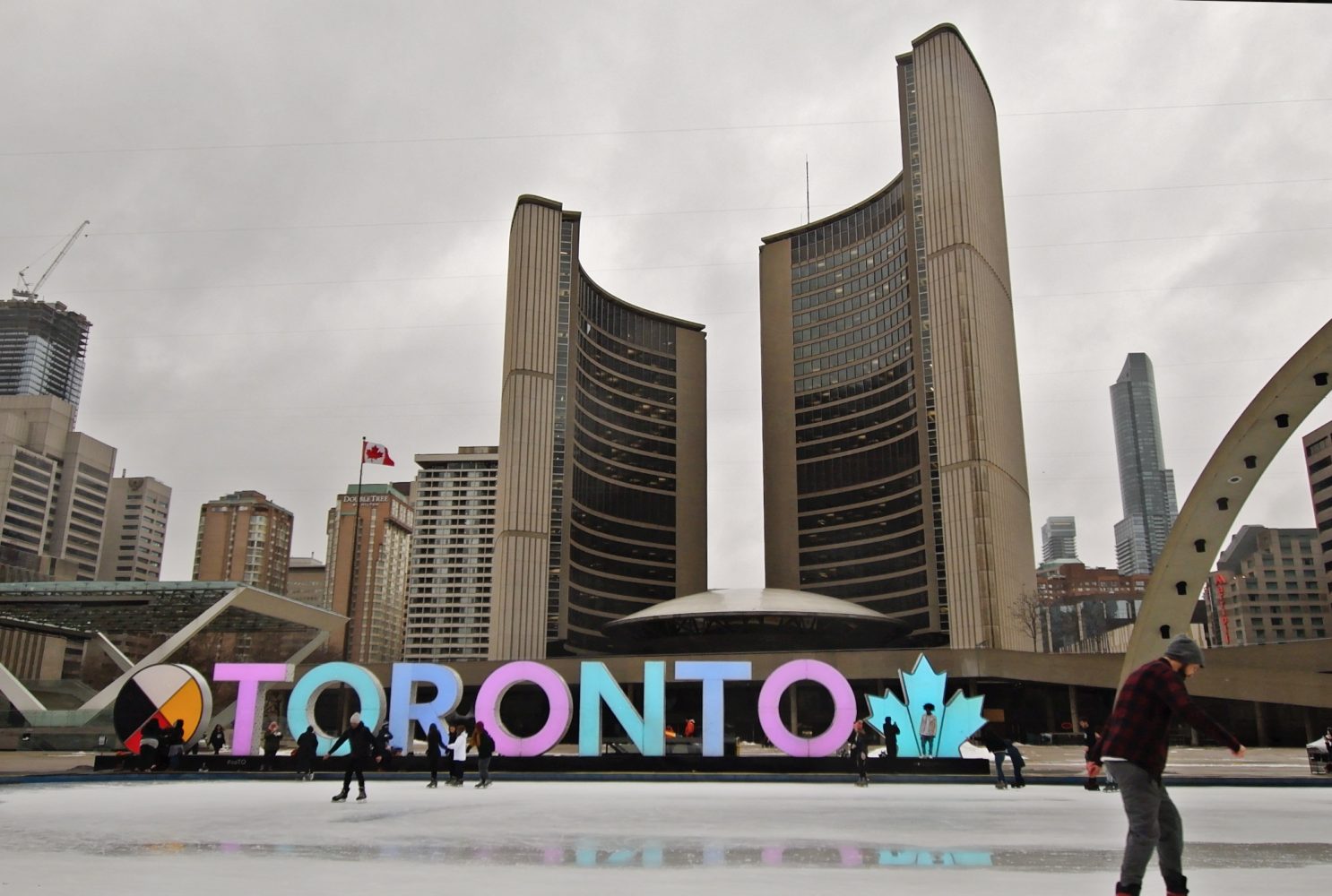How getting a gun in Canada differs from the U.S.
By Sofia Millar
Gun Laws
Rifles line every inch of the walls in Al Simmons Gun Shop. The people standing in front of them wear friendly smiles and have their hands on the glass counter, which is filled with an array of handguns.

One of those smiles belongs to Paulette Simmons, the only woman among five men. She probably knows more about guns than most of them.
After a mass shooting in Toronto’s Danforth neighborhood in July 2018, Mayor John Tory and his administration have been trying to pass a ban on all handguns within city limits. It’s a movement which could change the livelihood of every employee at the Ontario gun shop.
“I would probably have to shut the doors,” said Simmons, who is one of the owners. Handguns are her best selling item due to their year-round demand for target shooting.
It’s not just about closing shop for her, however.

“I’d never shot a thing beforehand,” Simmons said about picking up her first gun after meeting her husband.
For more than 30 years, she’s built her passion for firearms into her family’s traditions. Her children grew up going to the shooting range. As they’ve gotten older, Simmons has grown a collection of firearms she plans to pass down to her grandchildren.
She dreams of a future where her descendants will keep adding to the collection.
“They may not even be able to have them when they’re older if it continues on,” Simmons explained.
The ban on handguns could mean the confiscation of a portion of it.
They could still inherit some of them, though.
Background checks
Firearms are divided into three categories in Canada: restricted, non-restricted and prohibited. In order to own any of them, a person must hold a Possession and Acquisitions License.
“You can’t simply walk into a store and purchase one,” said Jordan Donich, criminal defense attorney. “There’s rigorous background checks and they’re getting increasingly more invasive.”
In the United States, buying a gun could mean up to a three-day waiting period.
Before Canadians get their PAL, they must go through the Canadian Firearms Safety Course and pass a two-part Safety Course exam with at least an 80 percent.
And that just qualifies them to apply for the license.
There are limited reasons people can own guns in Canada. Those include sport, hunting and building a collection as a hobby.
“We don’t have the right to protect ourselves in this country, which is sad,” said Simmons.
“The objective is to avoid guns being used to kill people,” Donich said. “I think, at least from a Canadian perspective, that could be argued is more important than the Constitutional right to own a gun.”
In 2008, the U.S. Supreme Court declared for the first time that the Second Amendment protects an individual’s right to self-defense and gun ownership.
In 2017 there were more than 2.1 million existing PALs in Canada. That’s just a few hundred thousand shy of the 1.9 million concealed firearm licenses in Florida alone, as of the most current statistics according to the Florida Department of Agriculture and Consumer Services.
“We don’t sell weapons. We sell firearms for sport,” said Simmons.

We don’t sell weapons. We sell firearms for sport.
The Canadian government takes it a bit more seriously than that. Officials say it’s a matter of putting public safety above everything else, as Donich pointed out.
“In a country where you’re free you should be able to own certain things. The problem is when those same things can cause harm to innocent people you get this clash,” said Donich.
“A gun sitting on the count
er will not kill anybody. Not one of these guns in this store has ever jumped off the shelf, loaded itself with ammunition and shot anybody,” countered Simmons.
Even so, a bullet fired by a gun can kill a person. In the eyes of a growing number of Canadians, that reality justifies strict ownership restrictions and a rigorous vetting process by the Royal Mounted Canadian Police into the background of every PAL applicant.
Once the RMCP receives an application, it needs to be processed for at least 45 days.
“You would probably get your license within about three to six months,” explained Simmons, who has held a PAL for more than 30 years.
The time frame allows for a more encompassing background check.
In the U.S., the time it takes for the Bureau of Alcohol, Tobacco, Firearms and Explosives to review a background check could be less than two minutes. It all depends on whether your name pops up in any form in their system. In Canada, the RCMP looks far beyond an applicant’s life.
Two witnesses who have known the applicant for at least three years need to sign and be prepared to vouch for them if the RCMP calls. In addition, if the applicant has a spouse, that spouse must sign the form, acknowledging they’ve been informed. The same goes for ex-spouses.
The background checks don’t end there.
Every 24 hours, the Canadian Police Information Centre runs a check on every gun owner in the country.
“If something comes up, they can immediately know you have a firearms license,” Simmons said.
The CPIC works with data from the Canadian Firearms Program, which can be traced back to 1995. The purpose of the organization is to help the RCMP and its affiliates regulate firearms in the country.
Gun violence
The RCMP revoked more than 2,000 licenses in 2017. 417 revocations were triggered due to mental health reasons.
Despite it being the leading cause for revocations after court mandated probations, some mental health specialists say it doesn’t mean a person with mental health issues is violent.
“The vast majority of people that perpetrate acts of violence with guns are actually people who don’t have mental illness,” said Dr. Ari Zaretsky, Sunnybrook Health Sciences Center Psychiatrist-in-Chief.
One in five people will experience a mental health problem in their lifetime. The statistic is the same whether in the U.S. or Canada. What is not the same is the rate of gun violence which is higher in the U-S than in Canada.
Nine times higher to be precise, as revealed by the University of Washington’s Institute for Health Metrics and Evaluation.
“We just don’t understand the American attraction to guns,” said Zaretsky.
We just don’t understand the American attraction to guns.
The figures paint the picture: the U.S. had 4.43 death per 100,000 people due to gun violence in 2017. Canada had 0.47 per 100,000 people.
Donich credits the relatively low violence rate to the strict firearms regulations across Canada.
“It comes down to accessibility to the weapon,” he said. “If you can’t get it and you’re someone who wants to cause a lot of harm, you can’t cause the same amount of damage without a gun.”
“The legal ownership of firearms is not going to stop the criminals from getting them,” Simmons argues.
It’s a hot topic in Canada, as well as the United States. Time will tell how each nation will maneuver the conversation.
Up next: About »
 Special Report from WUFT News
Special Report from WUFT News